Olive trees are one of the most popular tree species for landscaping and gardens due to their hardiness, rustic beauty, and evergreen foliage. But even tough trees like olive can suffer from certain environmental conditions that cause them to lose their leaves. If you find yourself with an olive tree that’s losing its leaves, here are some tips on how to fix it.
Reasons Why Olive Trees Drop Their Leaves
Seasonal Shedding
The first thing to note when it comes to olive trees losing their leaves is that some seasonal shedding is normal. Depending on the variety of olive tree, they may lose some of their leaves twice a year as part of a natural process. This usually occurs in the fall and spring as the tree transitions between seasons. If this happens, there’s no real need to worry as it’s a normal and healthy part of the tree’s growth cycle.[2]
Improper Watering
If the tree is losing its leaves out of season, it’s likely that improper watering could be to blame. Olive trees thrive in dry climates and therefore need to be watered properly in order for them to reach their full potential.
A good rule of thumb is to water your olive tree twice a week and then again if there’s been an extended period of no rainfall.[2]Improper Nutrients
It’s also possible that your olive tree is losing its leaves due to incorrect fertilization. Olive trees need the right balance of nutrients such as nitrogen, potassium, and phosphorus in order to grow strong and healthy.

If these are missing or out of balance, it can lead to leaf loss. To ensure optimal nutrition for your olive tree, it’s best to apply a fertilizer specifically designed for olives. This should be done every few months in order to provide the right balance of nutrients.
Pests and Diseases
Pests and diseases could be the cause of your olive tree’s leaf loss. Pests such as scale insects or mites can feed on the leaves, causing them to drop prematurely. Other common diseases that can lead to leaf loss include black spot and anthracnose. To combat these issues, it’s important to inspect your tree regularly for signs of pests or disease. If you do see any, you can try treating the tree with an organic insecticide or fungicide to get rid of the problem.
Insufficient Light
Lastly, olive trees need plenty of sunlight to thrive. If your tree is not getting enough light or if it’s located in an area that’s too shady, it can cause the leaves to drop prematurely. To ensure your olive tree gets enough light, make sure it’s planted in an area with at least six hours of direct sunlight per day.[5]
Low Temperatures
Low temperatures can also be a factor in olive tree leaf loss. If the temperature drops too low for an extended period of time, it can cause the leaves to drop prematurely. To protect your olive tree from this kind of damage, make sure to provide adequate shelter and insulation during cold spells.
Root Rot
Root rot can also be a cause of olive tree leaf loss. Root rot occurs when the soil around the roots becomes waterlogged, preventing them from getting enough oxygen and leading to decay. To avoid this issue, make sure your olive tree is planted in well-draining soil that doesn’t get too saturated with water. Additionally, check the roots occasionally for signs of rot and remove any affected roots as soon as possible.
Olive Knot
Olive knot is another potential cause of olive tree leaf loss. Olive knot is a fungal disease that causes galls or knots to form on the branches and twigs of affected trees. If left untreated, it can cause further damage to the tree and lead to premature leaf drop. To prevent this from happening, inspect your olive tree regularly for signs of the disease and remove any infected branches or twigs as soon as possible.[5]
Transplanting Stress
Lastly, transplanting can cause stress to your olive tree which in turn can lead to premature leaf drop. Moving a tree from one location to another requires careful handling and preparation. It’s important to make sure the tree is well-nourished and watered before and after the move as well as protected from extreme temperatures. Additionally, you should look for signs of transplant shock and take steps to mitigate the effects if needed.
Natural Life Phase
It is also worth noting that an olive tree can go through phases of leaf loss without any clear cause.
This happens most often during the summer when temperatures are at their hottest and can be a normal part of the tree’s life cycle.How To Fix it?
Examine the Roots of Your Young Olive Trees
If your young olive tree is losing its leaves, it’s a good idea to check the roots for any signs of damage or disease.
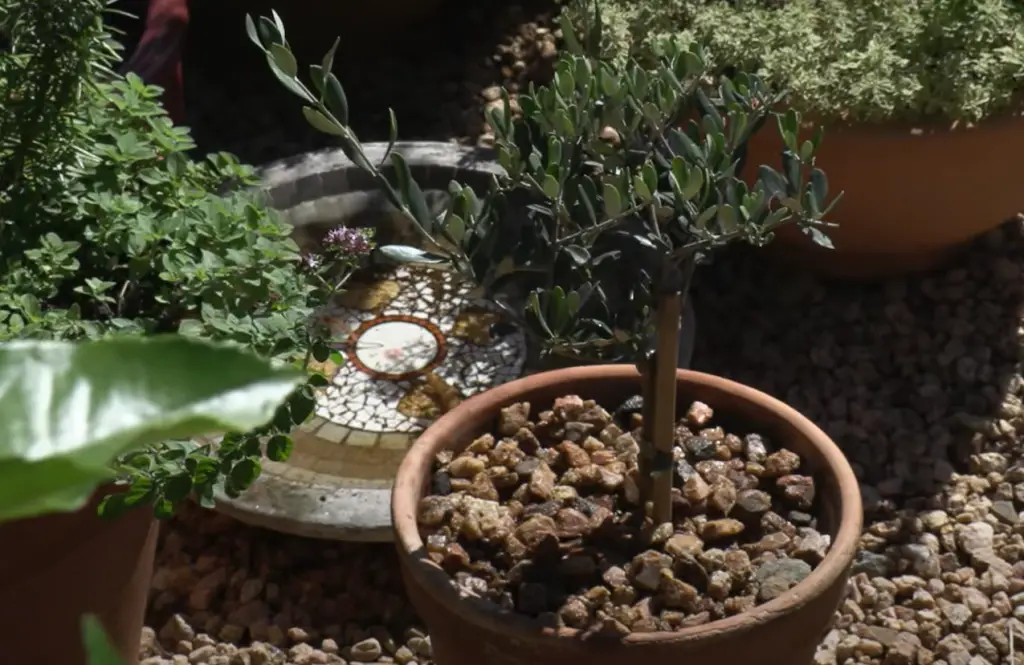
This could be due to improper watering, soil that is too wet or lacking in nutrients, or pests and diseases. To fix this issue, make sure you water your tree correctly and provide proper nourishment with a fertilizer specifically designed for olives.[1]
Pay Attention to Your Olive Lighting Needs
Olive trees need plenty of sunlight in order to thrive. If your tree is not getting enough light, it can cause premature leaf drop. To ensure your olive tree gets enough light, make sure it’s planted in an area with at least six hours of direct sunlight per day. Additionally, consider planting it on the south side of a building or fence so that it gets the sun’s rays for at least part of the day.
Properly Water Your Olive Trees
Olive trees need to be watered properly in order for them to reach their full potential. It’s important to make sure you provide enough water while also avoiding overwatering or underwatering your tree. A good rule of thumb is to water your olive tree twice a week and then again if there’s been an extended period of no rainfall. Additionally, if you live in an area with high temperatures or a dry climate, you may need to water your tree more frequently.
Buy Young Olives When the Temperature Is Just Right
When buying young olive trees, it’s important to make sure the temperature is just right. If the temperature drops too low for an extended period of time, it can cause the leaves to drop prematurely. To avoid this issue, it’s best to purchase your olive tree when temperatures are mild and not too cold or hot.
Amend Soil Properly Before Introducing New Plants
If you’re planning to introduce new olive plants into your yard, it’s important to amend the soil properly. Poorly amended soil can lead to root rot and other issues that can cause premature leaf drop. To prevent this from happening, make sure to add organic material such as compost or well-rotted manure before planting your olive tree.
By following these tips, you can help ensure your olive tree stays healthy and continues to produce a bountiful harvest of olives. With the right care and attention, you can enjoy a lush olive tree that will provide years of enjoyment!
How to Save an Overwatered Olive Tree That is Losing Leaves
If your olive tree is losing leaves due to overwatering, there are a few steps you can take to help it recover. Start by assessing the current state of the tree and taking steps to reduce the amount of water it’s receiving on a regular basis.[3]
Reduce Watering Frequency
Once you’ve identified the issue, it’s important to reduce the frequency with which you water your olive tree. Overwatering can cause root rot and other problems that can lead to premature leaf drop.
Add Compost to Promote Drainage
In addition to reducing the frequency of watering, you should also look into adding compost to your soil.
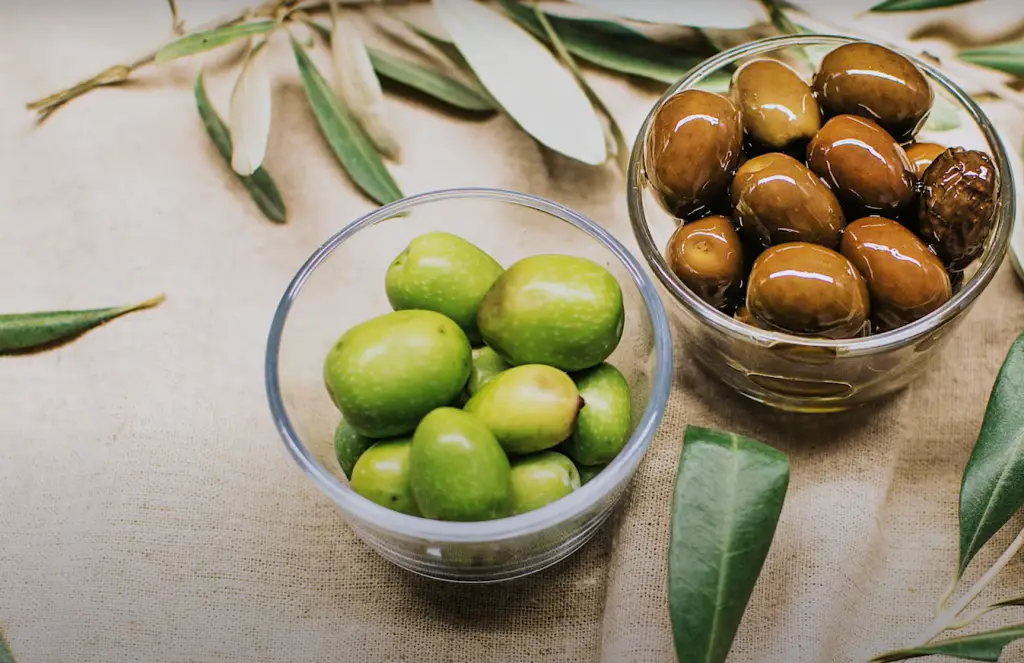
Compost can help improve drainage and aeration in the soil, allowing excess water to drain away faster and preventing root rot. It’s best to use a well-rotted organic matter such as aged manure or leaf mold for this purpose.
Cut Back on Fertilizer Usage
Finally, it’s also important to reduce the amount of fertilizer you’re using. Too much fertilizer can cause an imbalance in the soil and lead to root rot and other issues that can put stress on your tree. To prevent this from happening, make sure to only apply fertilizer when necessary and in the correct amount.
By following these tips, you can help revive an overwatered olive tree that is losing its leaves and keep it healthy for years to come! With the right care and attention, your olive tree will be producing delicious, juicy olives in no time!
How To Prevent Olive Tree From Losing Leaves
Plant Olive Tree In The Right Time
When planting your olive tree, it’s important to do so at the right time. Planting too early or late can cause stress on the tree which in turn can lead to premature leaf drop. To ensure you plant your olive tree at the optimal time, wait until temperatures are mild and there is no threat of frost.[4]
Make Sure That The Tree Is Inside a Large Enough Pot
Another important consideration is the size of the pot that your olive tree is planted in. If the pot is too small, then the roots won’t have enough room to spread out and absorb water and nutrients. This can cause stress on the tree which can lead to premature leaf drop. When choosing a pot for your olive tree, make sure it’s at least twice the size of the original root ball.
Provide Enough Sunlight For The Tree
Olive trees need plenty of sunlight in order to thrive, so it’s important to make sure your tree is getting enough light. If the tree doesn’t get enough light, it can cause premature leaf drop. To ensure your olive tree gets enough sun, plant it in an area with at least six hours of direct sunlight per day. Additionally, consider planting it on the south side of a building or fence so that it gets the sun’s rays for at least part of the day.
Water Olive Tree Regularly
In order to keep your olive tree healthy and thriving, it’s important to make sure it gets enough water. A good rule of thumb is to water your olive tree twice a week and then again if there’s been an extended period of no rainfall.
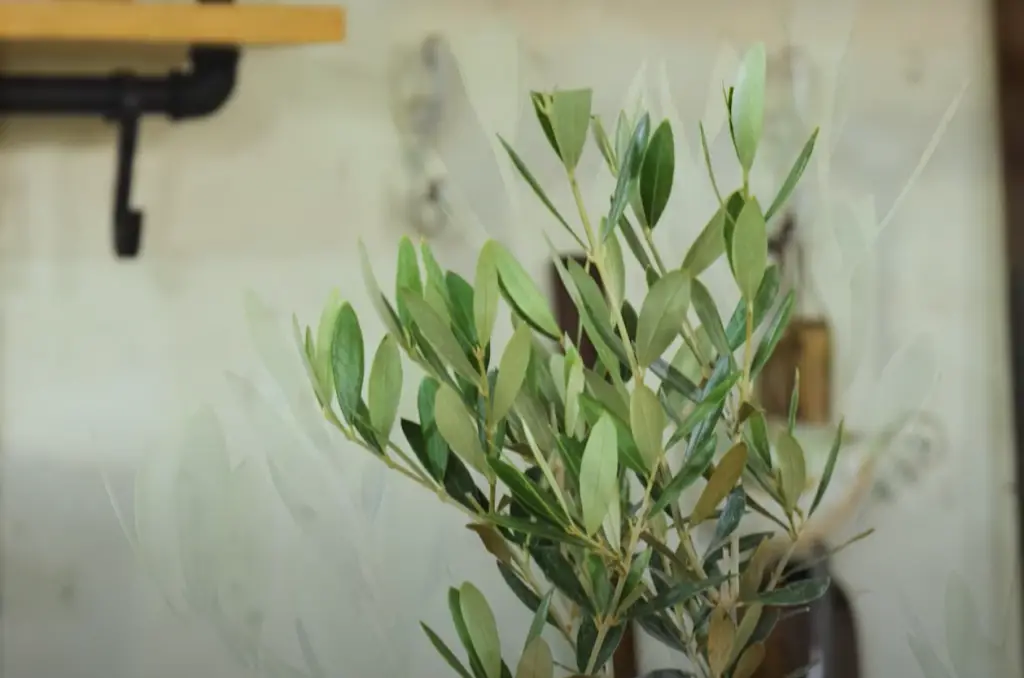
Additionally, if you live in an area with high temperatures or a dry climate, you may need to water your tree more frequently.[4]
Make Sure The Soil Has All The Important Nutrients
Finally, it’s important to ensure that the soil has all the necessary nutrients for your olive tree. The most important of these are nitrogen, phosphorus, and potassium. If any of these nutrients are lacking in the soil, you can add them as needed in order to ensure your olive tree gets all the nutrition it needs.
Prune Olive Trees Regularly
Pruning your olive tree regularly can also help to keep it healthy and prevent premature leaf drop. It’s important to remove damaged or dead branches as soon as you notice them in order to keep the tree healthy and promote new growth. Additionally, pruning back overgrown branches will allow more sunlight and air flow into the center of the tree, helping it to stay healthy and avoid any issues with leaf loss.[4]
Keep The Tree Away From Extreme Colds or Droughts
Finally, it’s important to keep your olive tree away from extremes of temperature and weather. Olive trees can be sensitive to both cold temperatures and droughts, so make sure to provide the right amount of water during dry spells and protect it against frost when necessary.[4]
FAQ
Are olive trees dead if they lose their leaves?
No, olive trees are not dead if they lose their leaves. While leaf loss can be a sign of stress or disease, it is usually possible to revive an olive tree that has lost some of its leaves by following the tips outlined in this article.
How do you save a dying olive tree?
The best way to save a dying olive tree is to assess the current state of the tree and take steps to reduce the amount of water it’s receiving on a regular basis.
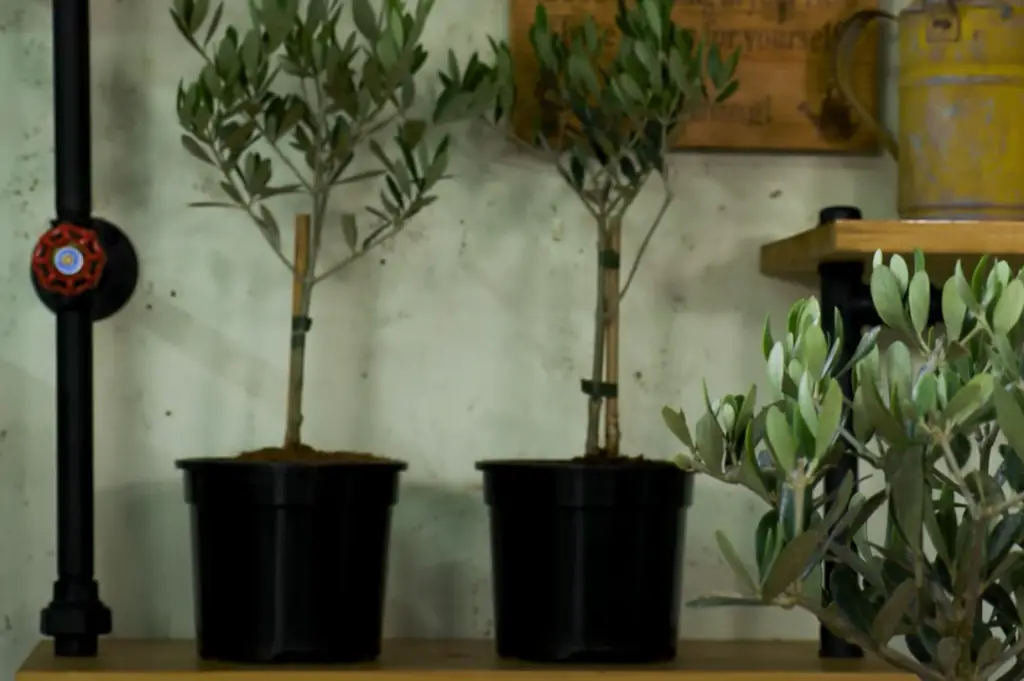
Additionally, add compost to promote drainage, cut back on fertilizer usage, plant your olive tree at the right time, ensure that the pot is large enough for its root system, provide enough sunlight, and keep the tree away from extreme temperatures.
What does an overwatered olive tree look like?
An overwatered olive tree may have wilted or discolored leaves, slowed growth, yellowed foliage, leaf drop, and an off-smelling odor from the soil. Additionally, the root system of the tree may be soft and mushy due to root rot.
What kills olive trees?
Olive trees can be killed by a variety of different pests and diseases, including root rot, olive knot disease, olive fly infestations, and cold temperatures. Additionally, an olive tree may become stressed or die if it’s overwatered or not given enough sunlight.
Do coffee grounds help olive trees?
Yes, coffee grounds can be beneficial for olive trees. Coffee grounds are a great way to add nitrogen to the soil and promote healthy growth. Additionally, they have been found to help deter pests such as slugs that may damage the tree.
What temperature kills olive trees?
Olive trees can be killed by temperatures as low as 25°F, so it’s important to protect your tree during cold weather. Additionally, high temperatures and long periods of drought can also damage or kill an olive tree if not properly managed.
What happens if you over water olive trees?
Overwatering can cause stress on an olive tree which can lead to premature leaf drop, wilted leaves, slowed growth, root rot, and even death. To avoid overwatering your olive tree, make sure you’re only providing enough water to keep the soil moist but not soggy.
Useful Video:Olive Tree Care | Winter Leaf Drop, Spring Time Update and Care Tips.
Conclusion
Taking the right steps to care for your olive tree is essential in ensuring it remains healthy and vibrant. Making sure that you plant at the right time, provide enough sunlight, water regularly, ensure proper soil nutrition, prune regularly, and protect against extreme temperatures are all important considerations when caring for an olive tree. Following these tips can help to avoid premature leaf drop and keep your olive tree healthy and thriving.
If you have any further questions about caring for your olive tree, don’t hesitate to contact a local tree care expert or arborist who can provide more personalized advice. With the right care, your olive tree will be able to thrive for years to come.
References:
https://www.evergreenseeds.com/olive-tree-losing-leaves/
https://gardeningtips.in/12-common-olive-tree-problems-how-to-fix-them-solutions-and-treatment





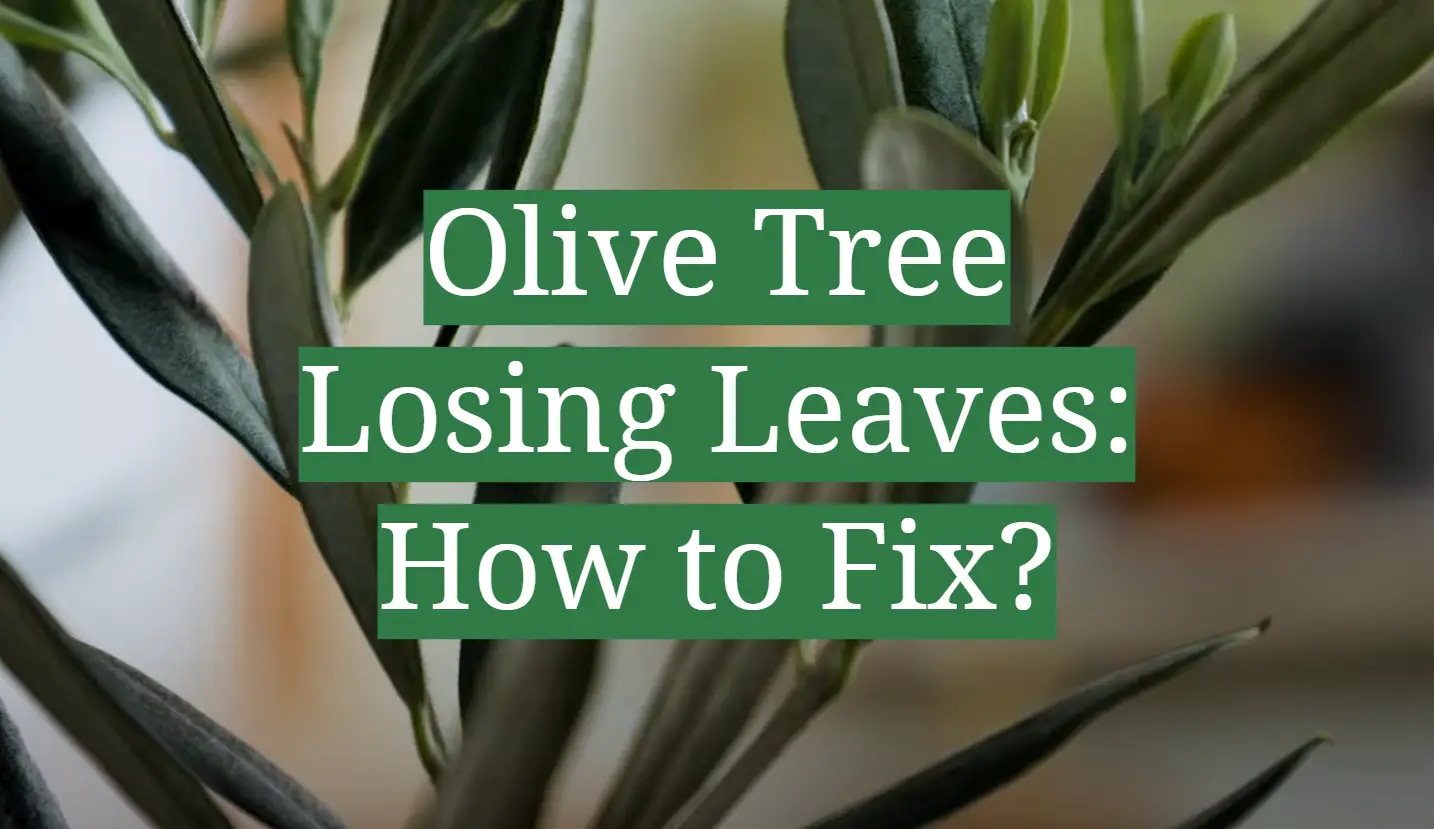



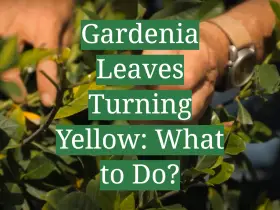
Leave a Reply
View Comments